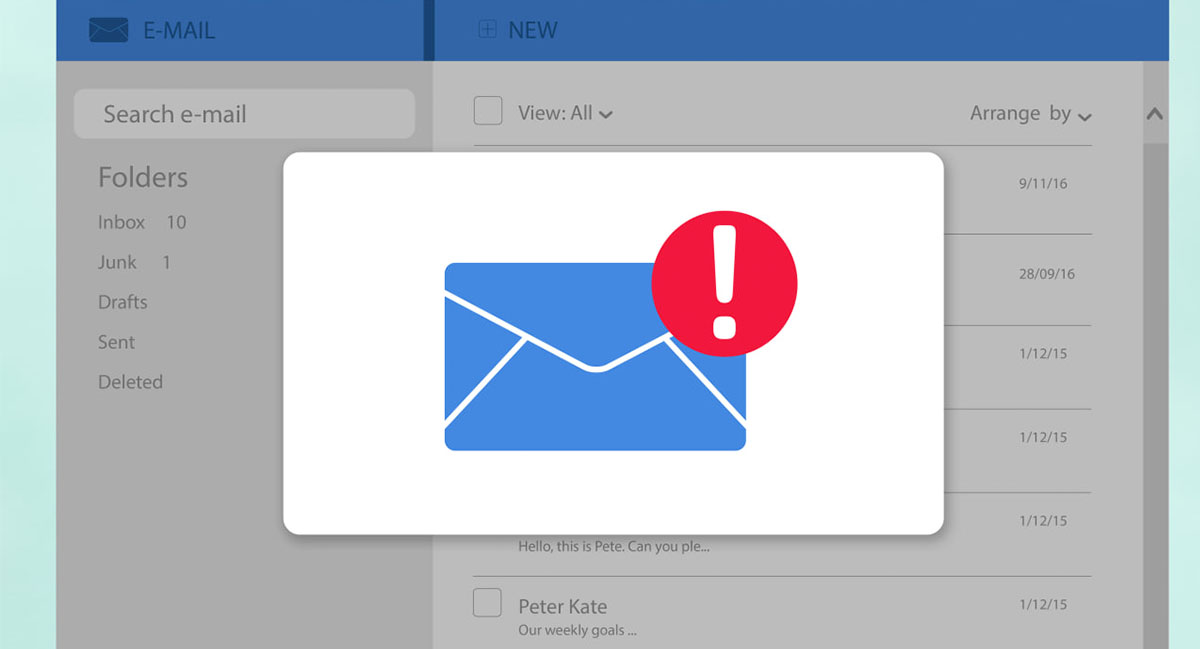Best Practices for Avoiding Spam Filters and Maximizing Email Deliverability
In today’s digital world, email marketing has become an indispensable tool for businesses aiming to connect with their audience. However, even the most engaging email campaigns can fail if they don’t make it into the inbox. Instead, they may be relegated to spam folders, where they’re never seen by your target audience. To ensure that your email marketing efforts are as effective as possible, it’s crucial to avoid spam filters and maximize email deliverability.
In this post, we’ll delve into the best practices for achieving high deliverability rates, avoiding spam filters, and ensuring that your emails land in the inbox where they belong. Let’s explore key strategies to make your email marketing campaign more successful.
Table of Contents:
- Understanding Email Deliverability
- How Spam Filters Work
- Best Practices to Avoid Spam Filters
-
- Optimize Email Content for Spam Filters
-
- Build and Maintain a Clean Email List
-
- Authenticate Your Emails
-
- Choose the Right Email Sending Frequency
-
- Use a Reliable Email Service Provider (ESP)
-
- Maximizing Email Deliverability
-
- Warm Up Your IP Address
-
- Monitor Your Email Metrics
-
- Personalize Your Emails
-
- Segment Your Audience
-
- Test and Analyze Your Emails
- Avoid Common Mistakes in Email Marketing
- Conclusion
- FAQ Section
1. Understanding Email Deliverability
Email deliverability refers to the ability of an email to successfully reach a recipient’s inbox, avoiding being flagged as spam. While many factors play a role in email deliverability, understanding these influences will help you craft more effective email marketing campaigns. Factors like sender reputation, email content, and even the technology used to send emails all affect whether your messages reach your audience or end up in the spam folder.
2. How Spam Filters Work
Before we dive into the best practices for avoiding spam filters, let’s first understand how these filters work. Spam filters analyze incoming emails based on several criteria. If an email meets certain thresholds for what is typically considered “spam,” it’s redirected to the spam folder. These filters use a combination of content analysis, sender reputation, and technical settings to flag potentially unwanted emails.
Here are some of the primary factors spam filters consider:
- Blacklisted IP addresses: If the IP address from which the email is sent is on a blacklist, the email will likely be filtered.
- Email content: Excessive use of certain keywords, suspicious links, and poor formatting can trigger spam filters.
- Engagement metrics: Low engagement, such as a high rate of unsubscribes or spam complaints, signals that an email may not be welcomed.
3. Best Practices to Avoid Spam Filters
1. Optimize Email Content for Spam Filters
One of the first steps in improving your email deliverability is ensuring that your email content isn’t flagged as spam. Here are some tips to optimize your content:
- Avoid Spam Trigger Words: Certain words and phrases, such as “free,” “winner,” “act now,” and “limited time,” are commonly flagged by spam filters. While they might work well in your email subject lines or copy, it’s better to avoid using them excessively.
- Clean HTML Code: Poorly formatted or overly complex HTML can make emails look spammy. Keep your email designs simple and professional.
- Use Clear and Relevant Subject Lines: Spam filters are sensitive to deceptive subject lines, so always keep them relevant and straightforward. Avoid using all caps or excessive punctuation (e.g., “WIN BIG!!!”).
2. Build and Maintain a Clean Email List
A well-maintained email list is critical for email marketing success. If you’re sending emails to invalid or outdated addresses, or if too many recipients mark your emails as spam, your sender reputation will suffer, which will affect deliverability.
- Use Double Opt-In: This is an effective method to ensure that the recipients genuinely want to receive your emails. It reduces the chances of your emails being marked as spam.
- Regularly Clean Your Email List: Remove inactive or non-engaging subscribers to keep your list healthy. Tools are available that can help identify invalid email addresses or unsubscribes.
3. Authenticate Your Emails
Email authentication is a critical factor in ensuring your emails get delivered to the inbox. It helps email providers verify that your emails come from a trusted source. There are three key authentication methods:
- SPF (Sender Policy Framework): This helps verify that the email sender is authorized to send emails on behalf of your domain.
- DKIM (DomainKeys Identified Mail): DKIM adds a digital signature to your emails, ensuring that the email is legitimate and hasn’t been tampered with.
- DMARC (Domain-based Message Authentication, Reporting, and Conformance): This allows you to set policies on how emails from your domain should be handled if they fail SPF or DKIM checks.
4. Choose the Right Email Sending Frequency
Sending emails too often can annoy your recipients, leading them to mark your emails as spam. On the other hand, sending emails too infrequently may cause your audience to forget about your brand. Finding the right balance is crucial.
- Consistent Sending Schedule: Be consistent with the frequency of your emails. Whether it’s weekly, bi-weekly, or monthly, make sure your audience knows when to expect emails from you.
- Respect Unsubscribes: If someone unsubscribes, honor their decision and do not continue sending them emails.
5. Use a Reliable Email Service Provider (ESP)
Partnering with a trusted ESP can help you avoid common email deliverability issues. A reputable ESP has systems in place to ensure high deliverability rates and may even offer tools to monitor your sender reputation. Additionally, many ESPs provide features like segmentation, personalization, and A/B testing, which can further enhance your email marketing strategy.
4. Maximizing Email Deliverability
1. Warm Up Your IP Address
If you’re sending emails from a new IP address, it’s essential to gradually warm it up. Starting with small volumes of email and gradually increasing the volume allows ISPs (Internet Service Providers) to recognize your sending practices as legitimate, rather than spammy.
- Start Slowly: Begin by sending a small number of emails to your most engaged subscribers and increase the volume over time.
- Avoid Sudden Spikes: Abrupt spikes in email sending can trigger spam filters, so pace your sending carefully.
2. Monitor Your Email Metrics
Monitoring your email marketing metrics is crucial for maintaining high deliverability. Pay attention to metrics such as:
- Open Rates: High open rates signal that your audience finds your emails relevant and valuable.
- Click-Through Rates (CTR): A high CTR indicates that recipients are engaging with your content.
- Bounce Rates: High bounce rates can negatively impact your sender reputation, so it’s essential to regularly clean your list.
- Spam Complaints: If too many recipients mark your email as spam, it can severely damage your reputation. Encourage users to whitelist your emails to avoid this.
3. Personalize Your Emails
Personalization is key to improving engagement and reducing spam complaints. Personalizing your emails can make your recipients feel valued and more likely to engage with your content.
- Use Recipient’s Name: Start your emails with the recipient’s name to establish a personal connection.
- Segment Your List: Group subscribers based on their interests, behavior, or location, and send them tailored emails that are more relevant to them.
4. Segment Your Audience
List segmentation allows you to send more relevant emails, which can improve engagement rates and reduce the likelihood of your emails being marked as spam. Segment your audience based on factors like:
- Demographics: Age, location, and gender can all influence the type of content a subscriber is interested in.
- Behavior: Segment by past interactions, such as purchases, clicks, or email opens.
- Engagement Level: Regularly interact with your most engaged users, and keep less active subscribers on a different frequency.
5. Test and Analyze Your Emails
Before sending out large email campaigns, always test them to check for deliverability issues. Use tools to check if your email might be flagged as spam, and test different versions of your email to see which one performs better.
- A/B Testing: Experiment with subject lines, email copy, and design to find the most effective version.
- Spam Checkers: Use spam-checking tools to evaluate the likelihood of your email being flagged.
6. Avoid Common Mistakes in Email Marketing
To ensure success with email marketing, avoid these common mistakes:
- Neglecting Mobile Optimization: A large portion of emails is opened on mobile devices. Make sure your emails are responsive.
- Ignoring Unsubscribes: Always respect unsubscribes and make the process simple for users.
- Overloading with Images: Too many images and not enough text can make your emails appear unprofessional or spammy.
- Not Providing Clear Value: Always ensure that your emails provide clear, useful value to your subscribers.
7. Conclusion
Avoiding spam filters and maximizing email deliverability is crucial for successful email marketing campaigns. By following the best practices outlined in this post, you can significantly increase the chances of your emails reaching the inbox, engaging your audience, and achieving the desired results.
Consistently focus on email list management, email content optimization, proper authentication, and segmentation to enhance your email campaigns. Testing, analyzing, and improving your processes will lead to better engagement and fewer emails flagged as spam.
FAQ Section
Q1: What are some common reasons my emails end up in the spam folder?
Common reasons include poor subject lines, using spam trigger words, sending emails from a blacklisted IP address, or having a bad sender reputation. Poor list hygiene and lack of email authentication can also contribute to emails being flagged.
Q2: How can I improve my sender reputation?
Improving your sender reputation involves maintaining a clean email list, ensuring that your emails are not marked as spam, and following authentication protocols like SPF, DKIM, and DMARC.
Q3: How often should I send emails in my campaign?
The ideal frequency depends on your audience and the type of content you’re sending. However, consistency is key. Whether it’s weekly or monthly, aim to establish a schedule and stick to it.
Q4: What are the best tools for checking email deliverability?
Some popular tools for checking email deliverability include Mailgun, Sender Score, and GlockApps. These tools help analyze your email’s likelihood of being flagged as spam and offer solutions to improve deliverability.
Q5: How can I prevent my emails from being marked as spam?
Ensure your email content is well-written and relevant, authenticate your emails, avoid excessive use of spam trigger words, and maintain a clean email list. Also, regularly monitor your email metrics to identify any potential issues early.






